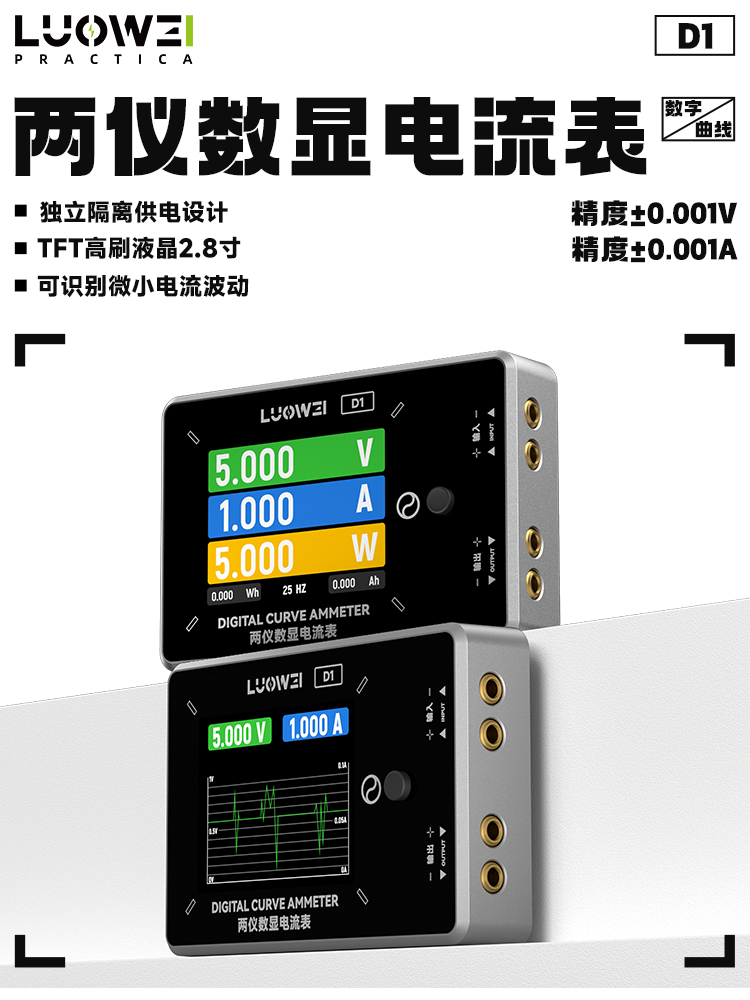
Luowei LW-D1 Isolated Power Supply Design Digital Curve Ammeter for Mobile Phone Repair
₱2000.00
Out of stock
Package - Ameter + Holder
The Luowei LW-D1 is a digital curve ammeter with an isolated power supply design, built for high-precision diagnostic work in mobile phone and electronics repair. It provides a visual representation of current and voltage, helping technicians detect subtle fluctuations that can indicate circuit problems.
Key features
Isolated power supply: The independent isolated power circuit prevents electrical interference and voltage spikes from the main power, which protects the device under test and improves measurement stability.
High-precision measurement: Optimized for high-accuracy data, the LW-D1 can detect minute current fluctuations (as low as 10mA) and voltage changes (as small as 0.001V). This is crucial for diagnosing tiny components on printed circuit boards (PCBs).
Visual curve display: It features a 2.8-inch TFT LCD screen that uses the LVGL system for a high-refresh-rate interface. The display shows real-time current and voltage data as a dynamic curve, offering a visual "heartbeat" of the circuit.
Dual-mode display: The interface can be switched with a single click to show either a large digital readout or the visual curve display for more detailed analysis.
Versatile mounting: A built-in 1/4-20 threaded interface allows the ammeter to be attached to a telescopic clamp or bracket for optimal positioning.
How it is used in mobile repair
The
LW-D1
functions as a precise diagnostic tool, similar to a doctor using an ECG machine to monitor a patient's heartbeat. For mobile phone technicians, it allows for the following applications:
Power-on diagnosis: By monitoring the current consumption when a device is powered on, a technician can spot abnormalities. An unusual current curve can indicate a short circuit, component failure, or a power management issue.
Leakage detection: The high precision of the
LW-D1
makes it suitable for detecting subtle power leakage in a device even when it is turned off. A small, persistent current draw can point to a faulty component or corroded area on the board.
Troubleshooting components: Observing the current flow when specific parts of the device are activated can help isolate which component is drawing too much or too little power. For example, a stable current curve might be expected, while a spike or a dip could indicate a problem.
